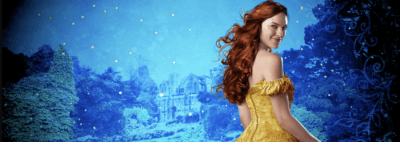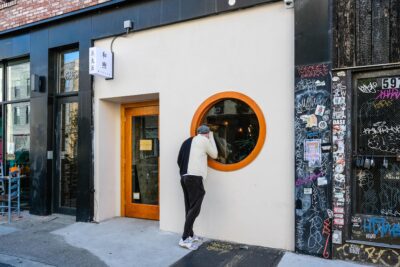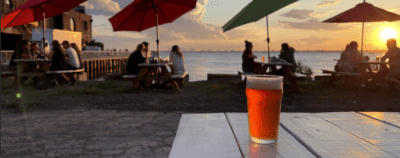Multidisciplinary artist Tamar Ettun’s installation ‘Lilit the Empathic Demon’s Belly.’ Photo: Walter Wlodarczyk
Pioneers at work
A visit to Pioneer Works, a vital community arts hub in Red Hook, as it turns 10 and reopens to the public
It is humid in Dustin Yellin’s 14,000-square-foot studio, which opens up onto Pioneer Street in Red Hook. Yellin, 47, and normally loquacious, is tired. His first child, Zia Copernicus, was born just a couple of months earlier, in May.
“Zia means light,” he mumbles from a couch in the center of the studio as he watches a team of employees spread out at different tables painting on sheets of glass that will eventually be stacked to form large blocks.
Those rectangular blocks, which when upright can stand over 6 feet tall, often fetch over $100,000 each. Looking at them at close range reveals miniature Hieronymus Bosch-style worlds of characters and objects suspended in clear glass. From a distance, the miniature scenes form a larger image — often life-sized 3-D human bodies.
He gets up to show one off: “The Politics of Eternity,” a series of the blocks organized in staggered heights that gets at several themes, including climate change. “That’s data that’s coming out of the sea and everything in the future,” he says, describing what we’re looking at. “That field of mushrooms is mirrored by the field of lights, by the satellites, by the moon, by the dinosaurs, by the sun; and the past and the future are represented by two oceans falling into a third. We have Mars, the god of war, and a supertanker sinking as an allegory…”
The glass technique is a signature concept that Yellin has down to an assembly line science. He started developing the idea in the late 1990s while living in a former stable in Chelsea, first by encasing objects in resin. Chelsea is a world away now. In that era, he cultivated a reputation as the bad boy of New York’s high art world, an intense partier and muse who attracted socialites, up-and-coming filmmakers, models and other high-class drifters into a Warholian orbit.
But these days, even though his works are sold at some of the most prestigious auctions and owned by celebrities and other upper-crust buyers, Yellin is perhaps even better known for founding Pioneer Works, a culture center located nextdoor to his studio in a former iron works factory. Pioneer Works turns 10 this year and is focused on public programming and arts exhibitions.
In more ways than one, the enfant terrible has become the daddy.
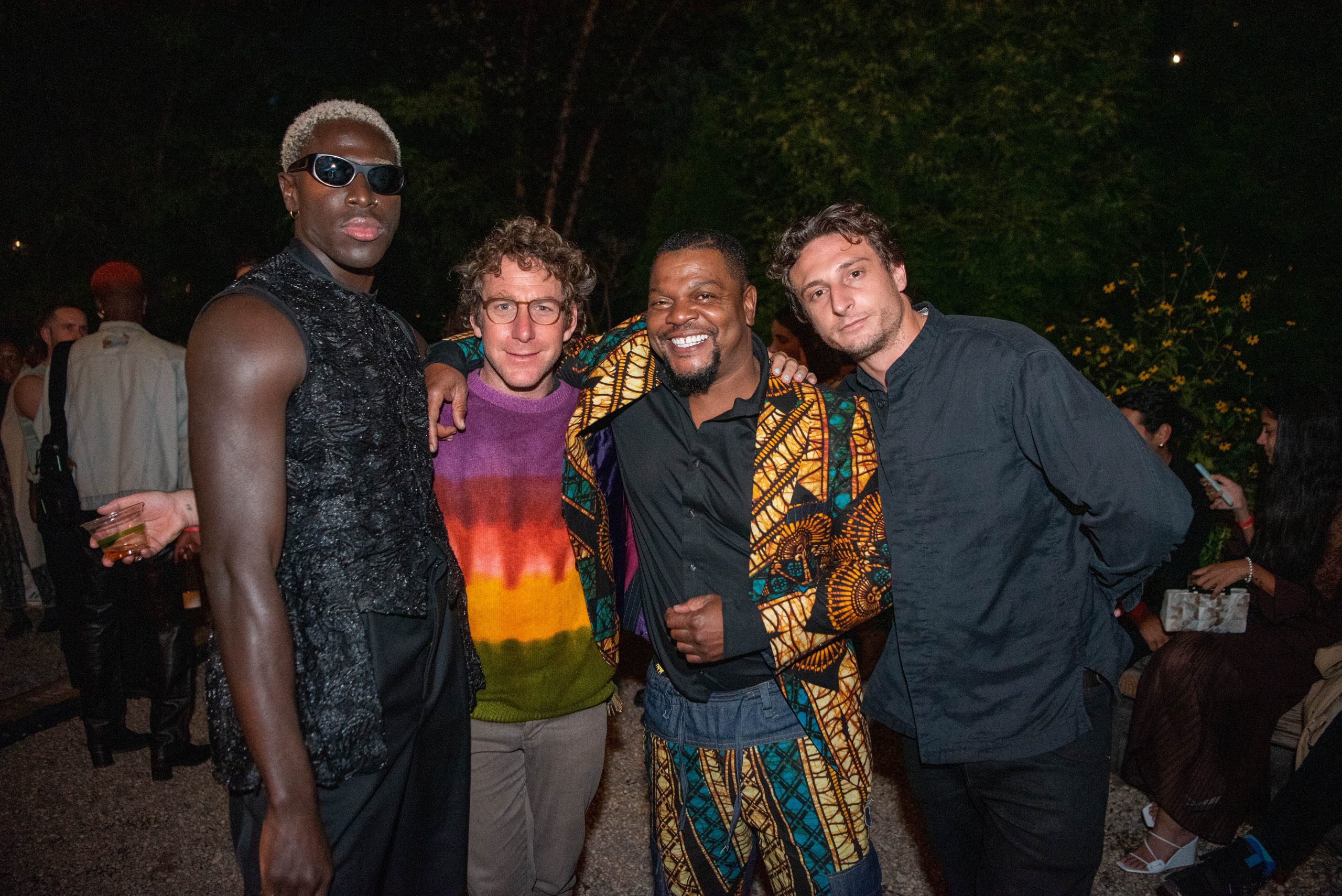
Left to right: Moses Sumney, Dustin Yellin, Kehinde Wiley and Gabriel Florenz. Photo: Edwina Hay
Tilling the soil
Yellin is by now close friends with many of the elites — no more druggy drifters — of the art, fashion and Hollywood worlds. Pioneer Works’ advisory board includes David Byrne and Princess Eugenie of York (Prince Andrew’s daughter), and its artist residency program is as coveted as just about any in the city. Its science programming — something Yellin aims to fuse with artistic practice — has earned Pioneer Works funding from the Simons Foundation, which normally backs some of the country’s top academic researchers. And Yellin hopes to open the city’s first-ever observatory available to the public sometime in 2024 or ’25 (he’s in a race against another observatory project in the Bronx).
After years of scraping to get to this point, Yellin is content to let the team he has helped cultivate at Pioneer Works take the reins.
“In my practice as an artist, making [Pioneer Works] is just the same as making a painting over there on the wall, or the sculpture over here,” he says. “The motion is all the same. But what happens in it has nothing to do with me … my job is just kind of like, tilling the soil.”
How Yellin made it all happen is a winding, unlikely story. Stepping out of his studio onto the street and into Pioneer Works next door — a cavernous space full of exposed wood and tattooed 20- and 30-somethings buzzing around — he perks up. While explaining the renovations that had kept it closed for eight months, Yellin sprints up a flight of stairs, chatting with a few workers who are repainting some of the artist studio rooms on the second floor. (The space reopened with exhibits in early September.)
“For years I was like, ‘Why isn’t this finished, and why is that there?’ ‘Why isn’t the stain the right color?’” Yellin says. “Now there are still moments like that, but then there’s moments when I’m like, ‘Holy fuck, this is crazy.’”
“The crack-up”
By 1999 — after dropping out of high school in Los Angeles and hitchhiking through New Zealand, Australia and Thailand before moving to Manhattan, where he quickly established himself — his artist stock was still on the rise. But his hypersocial lifestyle was taking a toll. In a 14-minute video that, as of this writing, is still up on the Dustin Yellin Studio’s Facebook page, Yellin filmed himself experiencing a psychotic episode and titled it “The Crack-Up” (a reference to the F. Scott Fitzgerald book of the same name). In it, after trespassing in a series of places throughout Manhattan and provoking various security guards, he gets arrested and ends up in a psych ward.
A few years after leaving that scene, a friend took him to get sandwiches at Defonte’s in Red Hook. Charmed by the neighborhood, which still had a reputation for crime and drugs, he bought a studio space in a former garage on Van Brunt Street. Then a few years later he boughta much larger one with his then girlfriend, photographer Charlotte Kidd. But Yellin had had visions of something much bigger since his early 20s: a Black Mountain College-style interdisciplinary arts center, combined with a science lab.
“I was definitely having these visions of, like, ‘Why isn’t there a place where there’s a recording studio, and a place where you could make paintings, and a place where you could make animations and do tech and, you know, ceramics?’” he says. “I came from a very naive perspective, right? Because I didn’t go to school. So in a way, I was probably like, ‘This is the school I always wanted.’”
In 2011, Yellin bought the decrepit 25,000-square-foot former factory for $3.7 million, with all of his savings, earnings from art sales and a loan his mother helped him secure.
Then, during the early stages of cleaning it and setting it up, Hurricane Sandy hit in the fall of 2012.
After the flood
Gabriel Florenz, Yellin’s former longtime studio assistant, is its founding artistic director and vice president, recalls sloshing through feet of water, watching tables, computers, some of Yellin’s artworks, and thousands of dollars of other equipment — including forklifts and two cars — wash away in waves. There was a kind of biblical quality to it, and he says it actually helped the team rethink how to design the space in a positive way.
“It was kind of one of the most beautiful nights of my life, then one of the worst years of my life, as far as the work and figuring it all out,” Florenz says.
The project got off the ground with some early help from Matthew Putman, a former Columbia physics professor who now runs a nanotechnology company. Janna Levin, a Barnard physics professor who’s written multiple books on Black Holes, signed on early to head Pioneer Works’ science department.
But even as Yellin’s pieces continued to sell — and he continued to grow his rolodex of rock royalty, movie stars and fashion icon clientele, earning the prestige of a Vanity Fair profile in 2015 — Pioneer Works wasn’t truly financially stable until about four years ago, Florenz notes. Today it receives a mix of private donor and public arts funding. Yellin can hardly process that it’s finally solvent.
“I cry sometimes when I’m talking to people, because I can’t believe it’s not that anymore. Like that [financial] pressure,” Yellin says.
Networking and talks aside, Pioneer Works has exhibited genre-bending works across cultures from leading global artists, from Anthony McCall (known for his light installations) to Moses Sumney (an indie musician whose albums have shown up on Top 10 of the year lists by the likes of The New York Times). Over the years Pioneer Works’ scientific ambitions have narrowed to focus on dialogue and conversation with the arts. The Scientific Controversies discussion series is one of Pioneer Works’ most popular offerings, regularly drawing hundreds of people. A recent one on the James Webb telescope featured Nobel laureate John Mather and Wendy Freedman, who Levin says could compete for a future Nobel in physics.
Levin adds that in some senses she now feels more at home at Pioneer Works than in academia.
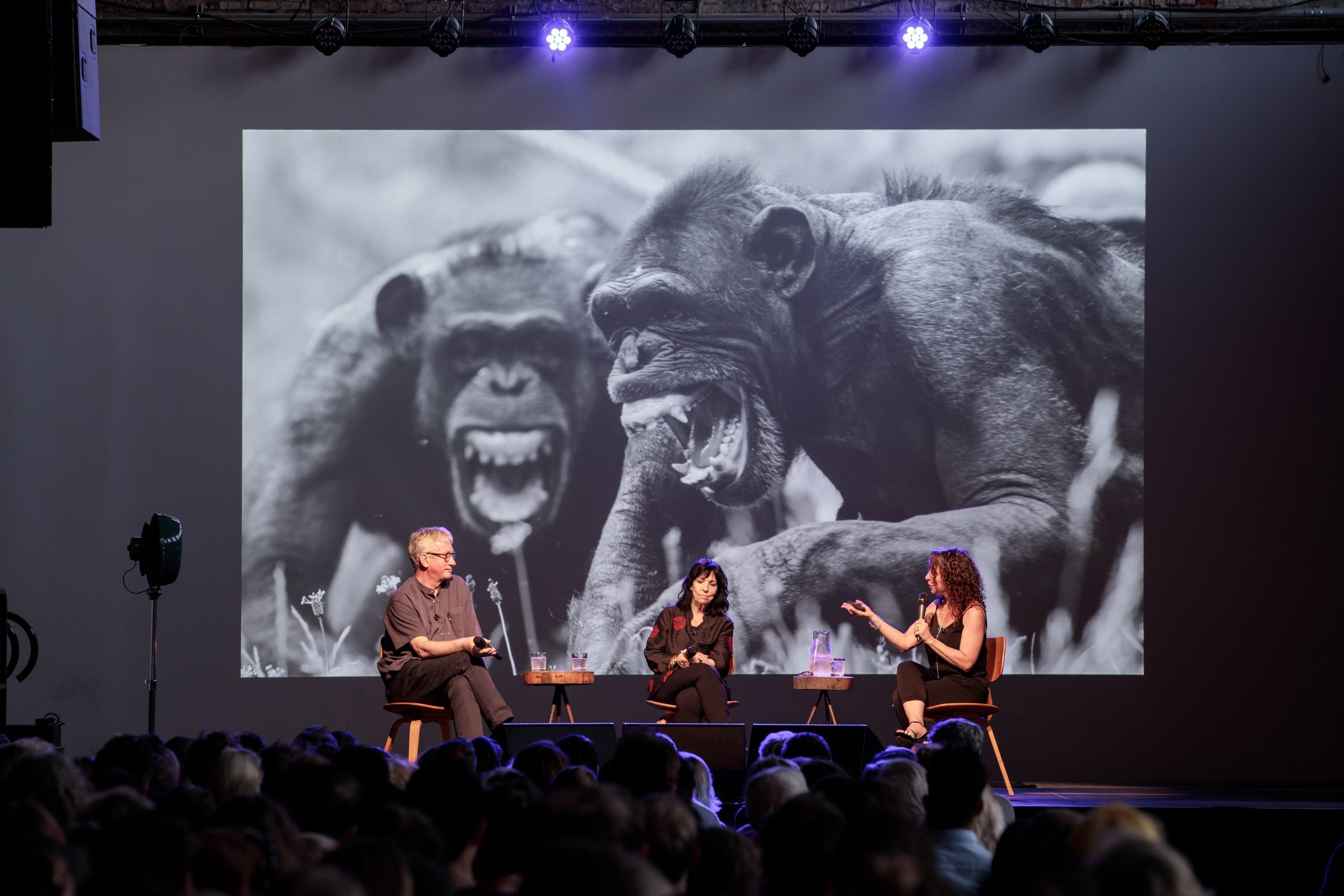

Primatologist Frans de Waal and marine mammal scientist Diana Reiss with Pioneer Works’ Janna Levin in a conversation about animal consciousness. Photo: Walter Wlodarczyk
Up-and-coming artists and musicians who win residencies are given their own studio rooms and the space’s recording studio for several months at a time. They also gain entré into Yellin’s circles of intellectual celebrity.
“I mean, there was a night I was just hanging out with Neil deGrasse Tyson, drinking wine,” says Nate Lewis, a visual artist who quit his job as an ICU nurse near Washington, D.C., when he earned a Pioneer Works residency in 2017. Like he does with other residents, Yellin connected Lewis with festivals and galleries after the residency ended. “They’ve brought really important people in — like [poet and playwright] Claudia Rankine, she came through,I met her, and now I have an ongoing relationship with her. People just from so many different industries.”
A tale of two Brooklyns
Transparency and engagement with the public is another theme — the space is often free to explore, and onlookers can observe the artists-in-residence at work (a fact that not all the artists are extremely fond of, Lewis notes). As a nonprofit, Pioneer Works does community outreach and charity work with public schools and other nonprofits that work with low-income residents in Red Hook — a neighborhood that has undergone sweeping gentrification over the past decade.
As Yellin and Pioneer Works have become a singular object of admiration and envy in the Brooklyn arts world, some question their motives because of that patina of buzz and celebrity.
One arts nonprofit director who says Yellin came to her for advice in Pioneer Works’ early stages says the organization has done its “due diligence” in terms of community work, but it is also seen by many in the local nonprofit world as representative of the “dichotomy of Brooklyn,” a borough under siege by “gentrification and development and change.” The Red Hook Houses, one of the city’s largest public housing projects, is located a few blocks from the Pioneer Works building.
“There was a certain profile for that place that attracted a certain clientele of white hipsters, right?” says the nonprofit leader, who asked not to be named. “I think that’s where maybe skepticism would come in, like how effective is that? We were surrounded by the biggest block of housing projects in Brooklyn, with people who were devastated in Superstorm Sandy — like, really devastated, and have not recovered from that even yet. And so how much of your high-priced dinner parties and whatnot are actually beneficial to them?”
Johnny Thornton, a local artist and the executive director of the Arts Gowanus nonprofit, calls the work he has seen at Pioneer Works events “thoughtful and stunning.”
“Their work with other community organizations that make Brooklyn a better place, like Red Hook Art Project (we are collaborators and I’m a big fan) and free programming, is also something that I find to be needed and necessary in our community,” Thornton writes in an email.
And they have offered free programming to hundreds of locals — in 2022 alone, Florenz says they have worked with over 300 K-12 students offering, for example, free environmental photojournalism workshops with the Red Hook Initiative, a nonprofit aimed at empowering Red Hook youth, and free music workshops in multiple public schools. (Florenz declined to give numbers for past years’ totals of outreach work.)
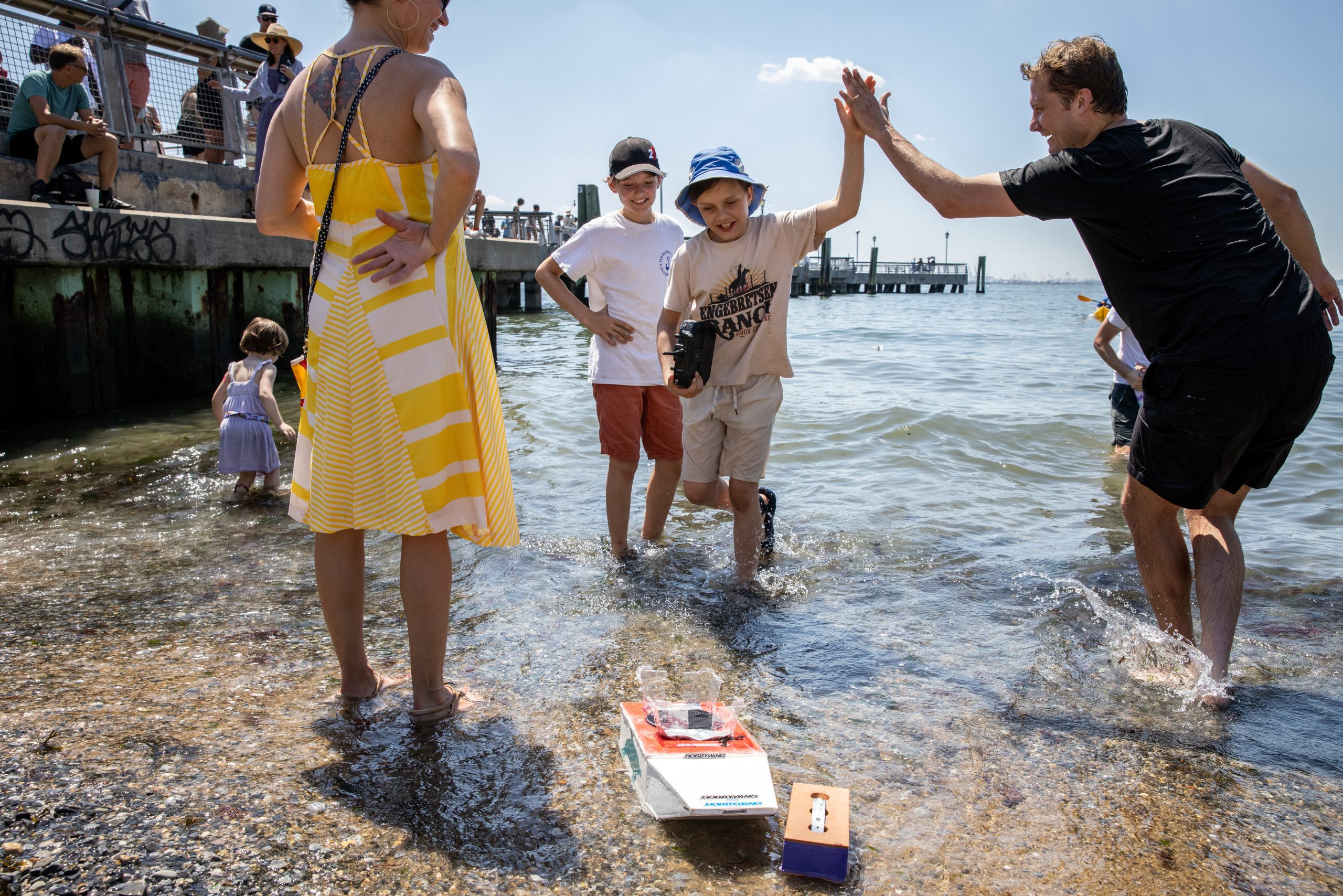

High water high five: At Pioneer Works’ sixth annual Red Hook Regatta miniature boat race in July. Photo: Walter Wlodarczyk
Looking ahead, Yellin wants more — of everything. Even if he’s settling into fatherhood, he’s still looking to sustain a vibrant artistic practice. At the end of his tour of the building, he pulls out his phone to show off a complex animation video that he’s working on. It’s in its early stages, he says, but the music accompanying it is by his friend Andrew Wyngarden, who happens to be the lead singer of the band MGMT.
“The next decade would be to really just solidify everything that we’re doing, and perhaps build in the garden and add more studios, more classrooms. More facilities,” he says. “And then also more of a look to like, what is the space between a museum and a school? What does the school ofthe future look like? And how do people learn?”
Beth Allen, executive director of the Downtown Brooklyn Arts Alliance, says that the first few years for any arts organization are crucial as its programming matures, it secures a mix of funders and forges a team of core employees. But she cautioned that no arts org that depends on a significant amount of public funding is out of the water after one decade. And the upkeep of a physical space — which many organizations don’t have to deal with post-Covid, and which the Pioneer Works team has already sunk millions into — is an ongoing challenge. Then there is the looming and undeniable threat that climate change poses to Red Hook’s waterfront.
“Ten years seems like a long time, but it’s really not,” Allen says. “So I think it’ll be interesting to see where they go in the future.”
When asked about their favorite moments from the first decade, Florenz mentions a series of concerts by Bon Iver’s Justin Vernon (who is on Pioneer Works’ advisory board). Yellin doesn’t have a specific one.
“Just the sheer impossibility that this came into being,” he says.
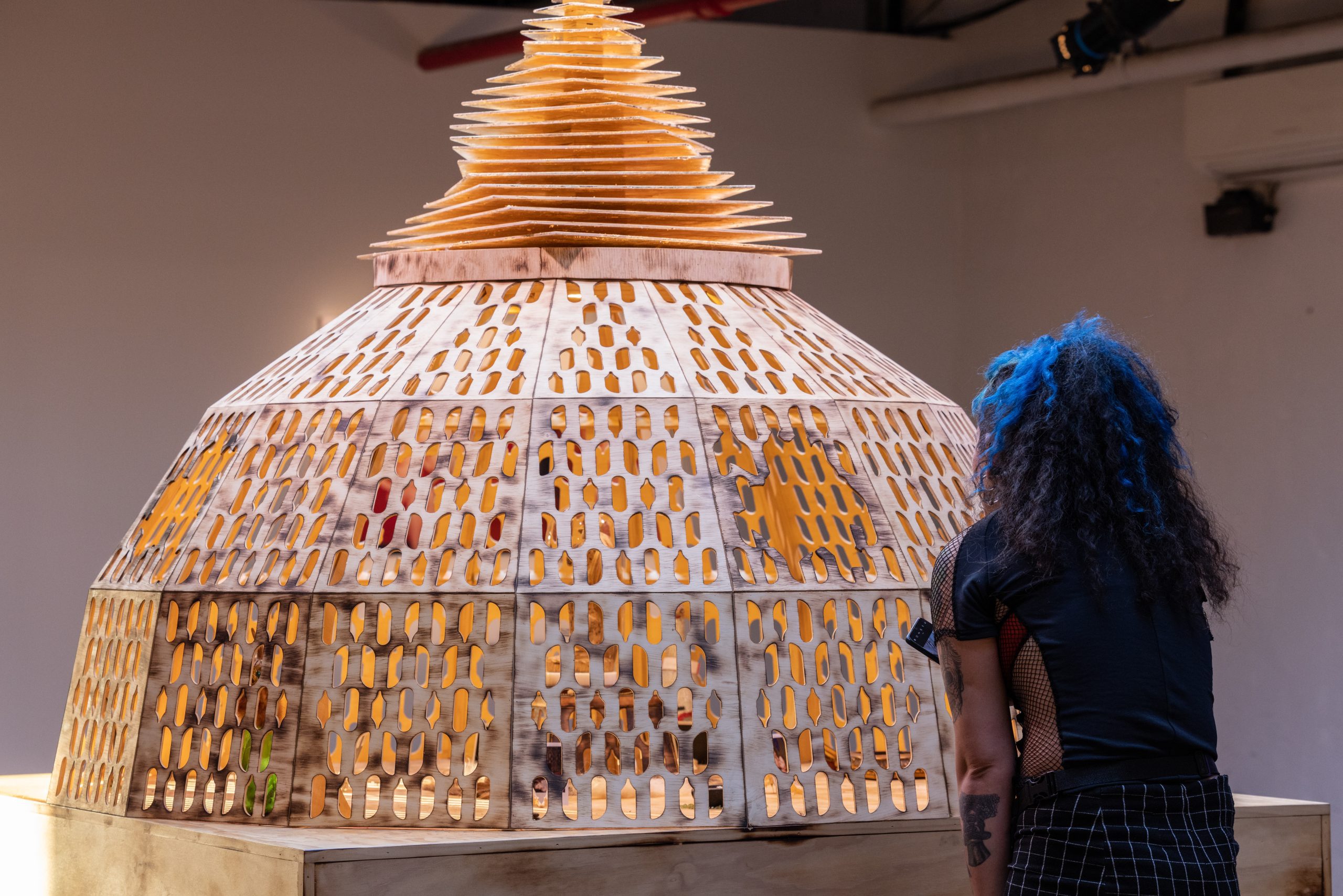

Breyer P-Orridge’s dome-shaped installation ‘We Are But One’ is inspired by Buddhist stupas. Photo: Walter Wlodarczyk
(This article is a slightly modified version of the feature that appears in the fall 2022 issue of Brooklyn Magazine. The version of this article that appears in the fall 2022 issue of Brooklyn Magazine incorrectly stated that Pioneer Works has worked with the artist Simone Leigh in the past. Click here to subscribe and get your copy delivered to your door!)
You might also like 


















